Reptile & Amphibian
News Blog
Keep up with news and features of interest to the reptile and amphibian community on the kingsnake.com blog. We cover breaking stories from the mainstream and scientific media, user-submitted photos and videos, and feature articles and photos by Jeff Barringer, Richard Bartlett, and other herpetologists and herpetoculturists.
Friday, May 27 2011
 The first discovery on record from a Cambodian national is a cryptic species of legless lizards that was originally mistaken for a snake.
From Fauna and Flora International:
“At first I thought it was a common species”, said Thy, who works as a herpetologist with the Ministry of Environment and Fauna & Flora International (FFI), “but looking closer I realised it was something I didn’t recognise.”
These cryptic species of reptile are easily overlooked and previous to this discovery there are no records for blind lizards occurring in Cambodia. The species was finally named the Dalai Mountain blind lizard Dibamus dalaiensis, after the mountain on which it was found.
....
“For one of our national colleagues to discover this unusual species and make the description is particularly satisfying,” said Berry Mulligan, FFI’s Cambodia operations manager. “It shows that the capacity of Cambodian scientists is now reaching an international standard.”
To read the full article, click here.
Wednesday, May 25 2011
 Love the myriad of species with which we share the world? There's an iPhone app for that.
From National Geographic:
Holding up a coastal horned lizard, (Phrynosoma coronatum) Scott asks:
“If I wanted to know where this lizard survives and where it doesn’t, I’d go to a museum and look at all the specimens collected over the last 100 years or so. It used to live in most of the chaparral around here, in the Bay Area of San Francisco.”
“But this is one of those species that is rapidly disappearing. And we’re not exactly sure why. It may be climate change. It may be changes to the ants that make up its diet. It might be the urban sprawl that is isolating its habitat. “
“We need to know exactly where this species persists. And, we need more data.”
Scott’s solution is not an army of well-funded professionals with sophisticated equipment. That isn’t going to happen. He wants you — the citizen scientist and a piece of equipment you likely already own — your iPhone. And, of course the app.
The app is called iNaturalist and can be downloaded here.
Monday, May 23 2011
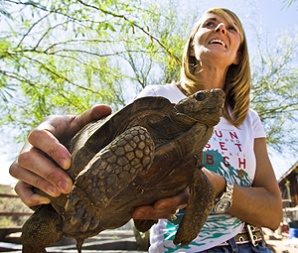 The impact of the crashing economy is causing many animals to become abandoned. According to the Phoenix Herp Society, the biggest impact is the Sonoran Desert Tortoise.
From AZCentral.com:
Over the past few years, the Phoenix Herpetological Society has been keeping ever larger numbers of desert tortoises, said Wendy Cassidy, tortoise-program coordinator. As more natural desert habitat is lost to development, people find the tortoises and drop them off at the reptile sanctuary in north Scottsdale.
But lately, many people who had kept tortoises in their yards have lost their homes and are moving away or into apartments, she said.
"So many tortoises are abandoned," she said. "A lot of Realtors call and say they have them. These tortoises can't live in an apartment."
Cassidy said the society is eager to adopt out the creatures, which cannot be released into the wild once they've been in captivity. This is a good time to begin the adoption process, she said, because the animals have just come out of hibernation and will have plenty of time to adjust to a new habitat before hibernating again in October.
Because the tortoises are protected, and each is implanted with a microchip and registered with the Arizona Game and Fish Department, the adoption process is lengthy, requiring an application and interview.
For the full article, click here.
Saturday, May 21 2011
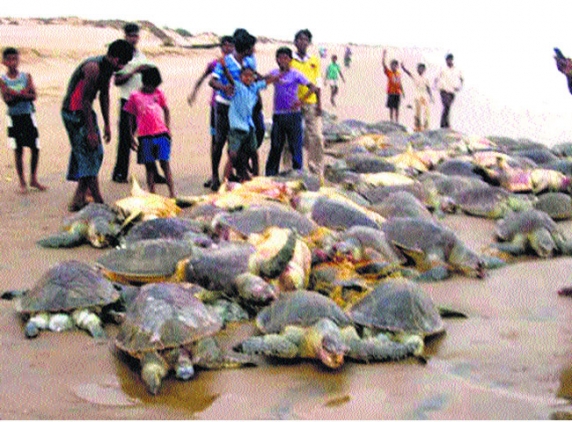 In one of the worst tragedies to affect the endangered Olive Ridley Turtles, 150 were pulled up in a single net, dead.
From the Deccan Chronicle:
In one of the worst disasters, around 150 Olive Ridley turtles got trapped in a single net and found dead on Kothapeta beach under Vajrapukotturu mandal in Srikakulam district on Friday.
The village sarpanch, Mr Ambati Raju, said he never saw so many dead turtles in his life and blamed the fishermen from Visakhapatnam for not taking preventive measures.
He defended that the local fishermen never used such nets in which the turtles get trapped and dead.
The founder chairman of Visakha society for prevention and care of animals, Mr Pradeep Nath, said the disaster took place as the mechanised boats and trawlers did not using turtle excluding devices.
To read the original article, click here.
Thursday, May 19 2011
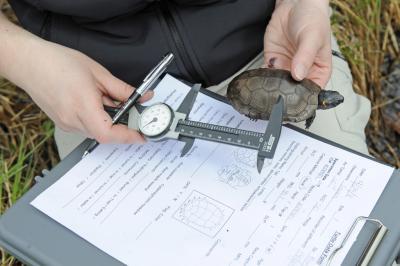 Higher than normal mortality rates are impacting the known bog turtles in the tracked habitats in the Northeast.
From ScienceDaily:
The Wildlife Conservation Society's Bronx Zoo veterinarians, U.S. Fish & Wildlife Service, New York State Department of Environmental Conservation, and the Massachusetts Natural Heritage and Endangered Species Program have joined forces to answer a perplexing wildlife question: Why are bog turtles getting sick?
The dilemma shines a light on North America's smallest turtle; an adult bog turtle reaches only 4.5 inches in length and as many ounces. Wildlife managers working in a few known bog turtle habitats in the Northeast have reported higher than average mortality rates for these threatened reptiles in the past few years.
To determine the cause of the increase in mortality at some sites and identify the baseline health condition at other sites, WCS's Global Health Program -- based at the Bronx Zoo -- is lending its expertise in wildlife health assessments. WCS health experts have joined federal and state wildlife managers in the field at locations in New York State and Massachusetts.
To read the full article, click here.
Wednesday, May 11 2011
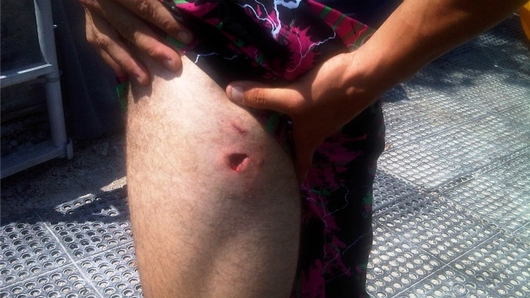 The first known bite of a human by an American Croc may have been recorded recently in Florida.
From MSNBC:
While state officials are trying to confirm the alleged attack, which happened Thursday morning in the Upper Keys, the couple says they have the bite and scratch marks to prove it.
Gregory, 23, and 20-year-old Poulson were kayaking at around 3:30 a.m. after a night of partying when they're vessel was flipped, they said.
As they scrambled to get back to the kayak, each was bitten on the leg. Poulson also suffered scratch marks on her side.
"I was saying how pretty it was out there and I wouldn't want to be anywhere else because I am from Ohio and then the boat just flipped," said Poulson, who moved to the Keys to study marine biology at Florida Keys Community College. "I was screaming 'Oh my God!'"
[....]
Unlike people's usually view of the croc based off the prehistoric-looking, aggressive saltwater crocodiles of Africa, American crocs are fairly shy and prefer flight over a fight, Mazzotti said.
He said Thursday's incident wasn't by a man-eating predator, but a scared reptile who was minding its own business.
"I wouldn't describe it as an attack. It was an escape attempt by the crocodile,” Mazzotti said.
"They are not grabbing you to eat you. They are giving a warning, 'Don’t mess with me.'"
A crocodilian attack story with the attacked parties mentioned "out partying" always leaves me with a bit of room for speculation. To read the full article, click here. And please don't drink and kayak in Florida.
Tuesday, May 10 2011
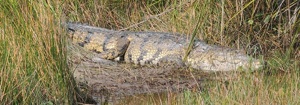 After decades of being listed as endangered, the Morelet's crocodile is seeing a wonderful rebound in population thanks to some strong conservation efforts.
From Scientific American:
Once heavily hunted for their skin, which was heavily valued as a source of high-quality leather, the Morelet's crocodile began its slow climb toward survival back in 1970, when Mexico (where most of the animals live) banned hunting of all crocodiles and caimans. That year, it was also protected under the predecessor to the U.S. Endangered Species Act (ESA), which prevented any import of the animals or their parts into the country, a ban that continued after the ESA was enacted in 1973. In 1975 the Convention on International Trade in Endangered Species of Wild Fauna and Flora (CITES) listed the species under its Appendix I, which forbid any trading of the crocs except under special circumstances.
The years of protection did the trick. By 2000, the International Union for Conservation of Nature, which maintains the Red List of Threatened Species, downgraded the crocodile from "Endangered" to "Lower risk/Conservation dependent."
Then, last year, CITES reassessed the species once again, and reported in March 2010 (pdf) that "there is currently no evidence that disease, native or alien predator species, tourism, or scientific activities represent negative factors or threats for the wild populations of the Morelet's crocodile." CITES also found that Mexico's legal protections are effective and adequately enforced, as are similar laws in Belize and Guatemala; and that there is a large enough captive population of the species to satisfy all domestic and part of the international demand for its leather. CITES thereby moved the species to its Appendix II, which allows for closely controlled trade.
To read the full arrticle, click here.
Monday, May 9 2011
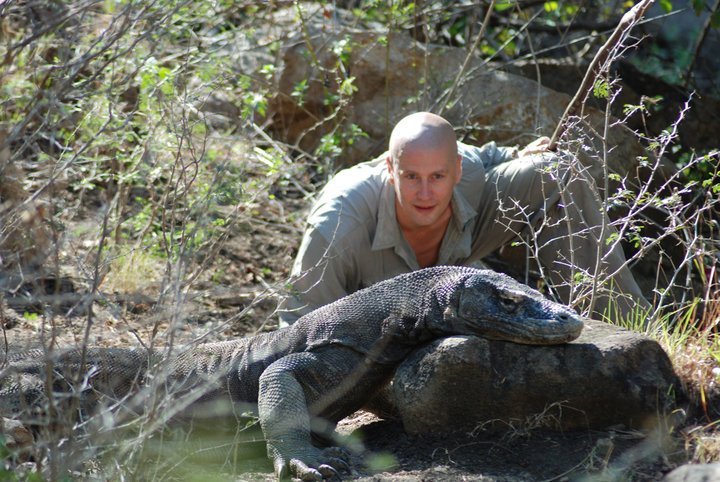 kingsnake.com BFF Dr. Bryan Grieg Fry was presented with the Fenner Medal in Australia, but he wasn't about to rest on his laurels. He quickly shifted the spotlight to the use of venoms to treat medical conditions, one in particular, high blood pressure.
He has proven the proteins in dragon venom are 10 times more potent than the human body's mechanisms for lowering blood pressure.
But the dragon proteins are not stable enough to treat high blood pressure in humans.
Associate Professor Fry says he is collaborating with chemists to try to make the predatory toxins last longer, and find a way to deliver the treatment as a pill.
"Since we already have the sequences and we already have the venoms, we don't need to worry about the wild populations," he said.
"Rather we are using this information to try to bolster conservation efforts of showing why we need to protect these magnificent creatures.
He hopes to have a working model in five years to move forward with testing in cardiac patients, but he also has a hope that discoveries like this will help to work towards conservation efforts worldwide.
To read the full article from ABCNews, click here.
Saturday, May 7 2011
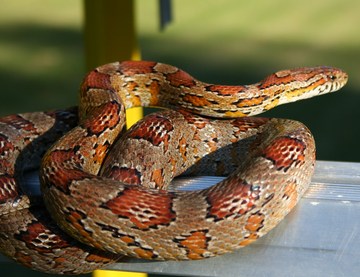 A family dispute turn tragic for their pet corn snake when Barry Laverick came into the home in a drunken rage and proceeded to bite the head of his children's pet.
From the Darlington & Stockton Times:
Jacqui Edwards, prosecuting, said Laverick had been drinking when he came into Ms West’s home, in Linfield Ash, Coulby Newham, on April 6.
Laverick told Ms West she would not be able to move her snake or the family dog in a planned house move, adding: “That dog’s only going if it’s stuffed.”
He became increasingly aggressive and called the family to the foot of the stairs where he held the snake. Ms Edwards said Laverick threatened to bite the snake’s head off and added: “His 12-year-old son was screaming for him not to do it, but the appellant bit the snake’s head from the body and two-year-old started to scream."
“Victoria West describes herself as being in shock and found herself placing the two parts of the snake into the tank.
“She effectively told him to get out of the house, but he began pulling her hair. The eldest son took the youngest into his arms.
“She was in fear and struck Laverick twice in the face but was too frightened to call the police.
“He called to the dog and said, ‘if you think that’s bad wait ‘til I cut the dog’s head off’.”
Laverick is currently jailed for 16 months for causing unnecessary suffering to an animal. He attempted to appeal it, however, his motion was denied. He was also charged with assualting Ms. West.
Thursday, May 5 2011
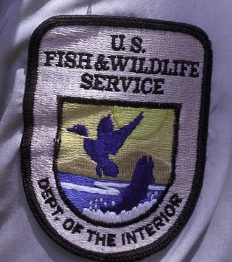 As the battle of reptile keepers heats up with US Fish and Wildlife, history shows that when it comes to their own agenda, USFW will do whatever they want, even if it means going against court orders.
From AxcessNews:
In 2008, the US Fish and Wildlife Service (FWS) enacted a ruling that shut down the pumps controlling irrigation of the San Joaquin River Valley (California) in an attempt to protect an endangered native fish. It is estimated that this ruling cost the local economy thousands of jobs and nearly wiped out the region’s farming industry. When several state and local entities challenged this decision in 2009, a US District Court judge overruled the FWS’s “arbitrary and capricious” decision, citing their use of “sloppy science” and stating that the “best available science” had been ignored. The judge also criticized the FWS for their failure to consider the cost this decision would, and did have on the general public and economy (see: Decision). This was only the second time in history that a FWS decision was overturned.
Rather than take and implement the constructive criticism doled out by the US District Court, however, the FWS has chosen to ignore it and continue to arrogantly pursue its own agenda yet again.
The FWS is now seeking to make the interstate trade and transport of Boa constrictors, Burmese and Indian pythons, and several other large constricting snakes a felony based entirely on a pair of highly criticized reports published in 2008 and 2009 by Gordon Rodda and Robert Reed of the US Geological Service (USGS). (It bears mentioning that the FWS and the USGS are sister organizations under the Department of the Interior).
To read the full article, click here. We herpers are in for quite the struggle.
Wednesday, May 4 2011
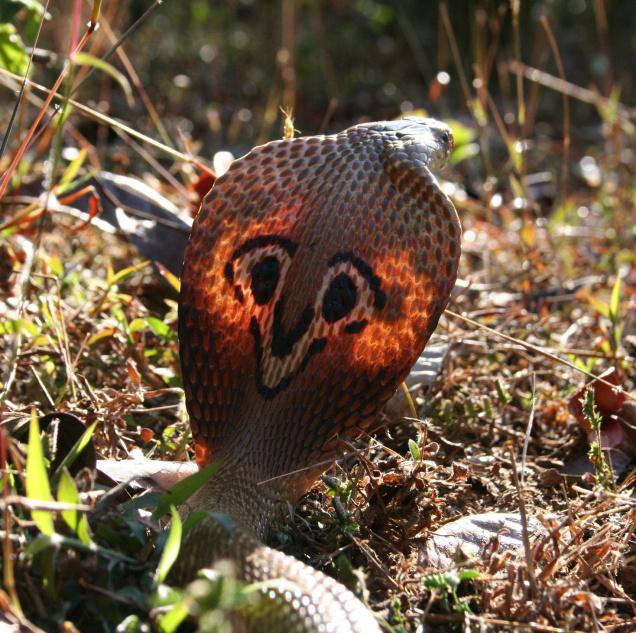 Pinpointing the number of deaths caused by venomous snakes world wide is nearly impossible. Recent studies in India show that these numbers are often victim of faulty data collection.
From The Hindu:
In 1954, Swaroop and Grab put together the World Health Organization's first global snake bite estimates but they lacked real data from India; they quoted a mere 20,000 deaths. Were they simply using the 1889 figures? In 1972, two Japanese researchers, Sawai and Homma, took a crack at the problem. They visited numerous hospitals around the country and did some extrapolation and came up with 10,000 deaths per year with the caveat that 90 per cent of the victims never approached a hospital.
Then in 1998, Chippaux estimated that snakes killed between 9,900 and 21,600 people annually — this was when our population was on the threshold of hitting one billion. In 2005, WHO estimated 50,000 Indians died of snake bite, but in a study it funded in 2008, the fatality was pegged at 11,000. The same year, the government of India jumped into the number-crunching fray and came up with, ahem, 1,400 mortalities! Apparently, six of the worst-affected states never sent their figures.
These estimates don't tell us much about the nature of the problem — has it worsened or become better? So far there has been a little bit of science, but in the face of a huge logistical challenge, numbers were extrapolated to arrive at wildly unstable numbers. Sort of like our wildlife census data.
A part of the problem is that snake bite is not a “notifiable disease”, that is, the Health Ministry has not issued a data-collection directive to the states as it has done in the case with AIDS. The other problem is, of course, the obdurate belief in country medicine and quacks rather than anti-venom serum.
To read the full article, click here.
Monday, May 2 2011
 Last week horrid storms ravaged the southern part of our country and one of our own was caught in the worst of it.
Raymond and Andrea of the Alabama Herpetological Society lost everything when a tornado hit their home, but short of some minor injuries they are physically OK. One of our volunteers sent a plea out to friends recently.
Raymond,his wife Andrea and their 15 year old son, lost their home in the Alabama tornado. The destruction was devasting to entire structure of home. Andrea was hit down one side of her body, suffered horrible abrasions, and cracked ribs and their son tried to cover her with his body and suffered cuts and bad bruising. Both were treated and released from hospital.
Raymond was trying to help his mother, in the process had to literally cling to a tree for his life. He made it, the tree however broke and crashed directly over him. Both Raymond and his mother are ok.
[....]
By them doing what they do, they, in a way, represent all of us that breed, sell, and perform business related to reptiles.
As individuals become more properly educated and introduced to reptiles in a positive, knowledgeable manner, it helps promotes growth on the business end and gives the reptile a positive impact in lieu of the negative one so accustomed to reptiles and media coverage.
With all this being said, I am asking your support to help this family in need. Some places have offered to auction items or reptile and send proceeds to them, or perhaps a gift card to Wal Mart, or a gift card like Visa or Mastercard.
Every dollar amounts to something, it adds up! all of us joining together to help can impact this family in the most amazing wonderful way, one person works with children and the children wanted to do something so they all drew pictures and made cards to send, everything positive will help renew their strength
To help Raymond and Andrea donations can go to the address below:
Raymond and Andrea Corey
459 Spring Oaks Trail
Wellington, Al. 36279
Photo is of what remains of their kitchen.
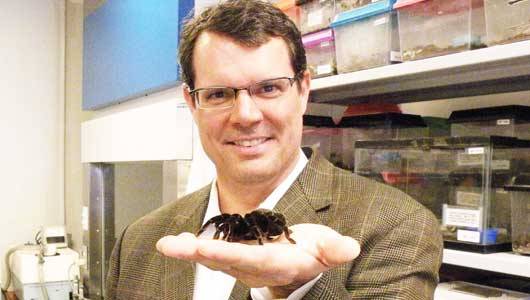 BioVeteria Life Sciences, LLC, will be moving into Prescott, Ariz., and working to expand the health care field's ability to better treat with anti-venom, primarily in veterinary medicine.
From PrescottNews.com:
Dr. Craig Woods, a research veterinarian and BioVeteria’s General Manager, stated “BioVeteria chose to establish their headquarters in Arizona for several reasons, including Arizona’s strong comparative antivenom research programs such as University of Arizona’s Viper Institute. In addition, Arizona represents the epicenter for venomous snakebites in pets, therefore giving our team the ability to directly assist in treating dogs.”
BioVeteria Life Sciences, LLC conducts a significant portion of their R&D in Arizona at various labs and veterinary specialty hospitals. Dr. Woods stated, “Veterinarians treat about 25 times more venomous snakebites compared to physicians, so the veterinary market need for antivenom is substantial. I have seen first hand the significant benefit of this new antivenom for dogs, and am excited to be part of such a needed program from veterinary medicine.” It is estimated that hundreds of thousands of dogs are bitten by rattlesnakes, cottonmouths, and other pit vipers in the United States each year. Many of these dogs require antivenom to avoid severe complications or death. Currently, there is only one approved antivenom for veterinary medicine so the market opportunity for additional antivenoms is substantial.
For the full article, click here.
|



